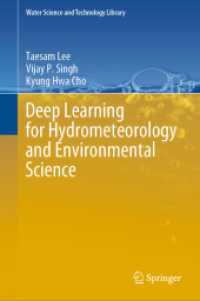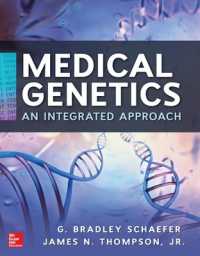- ホーム
- > 洋書
- > 英文書
- > Science / Mathematics
Full Description
Our civilization owes its most significant milestones to our use of materials. Metals gave us better agriculture and eventually the industrial revolution, silicon gave us the digital revolution, and we're just beginning to see what nanomaterials yield. Updated to reflect the many societal and technological changes in the field since publication of the first edition, Introduction to Materials Science and Engineering, Second Edition, offers an interdisciplinary view that emphasizes the importance of materials to engineering applications and builds the basis needed to select, modify, and create materials to meet specific criteria. The most outstanding feature of this book is the authors' unique and engaging application-oriented approach. By beginning each chapter with a real-life example, an experiment, or interesting facts, the authors wield an expertly crafted treatment that entertains and motivates as much as informs and educates. The discipline is linked to modern developments, such as semiconductor devices, nanomaterials, and thin films, while working systematically from atomic bonding and analytical methods to crystalline, electronic, mechanical, and magnetic properties as well as ceramics, polymers, corrosion, and phase diagrams.
Updates in the Second Edition
References to advances in the field, including computational thermodynamics, allowing computation of phase diagrams with great accuracy and new materials
Updated applications and technologies, such as electric vehicles and the use of magnetic fields as a processing tool
Revised, practical end-of-chapter problems that go beyond traditional plug-and-chug exercises to enhance learning
More examples with detailed solutions in each chapter
A new chapter highlighting how materials can impact four United Nations Sustainable Development Goals
This book is written for undergraduate students and readers interested in introductory materials science and engineering concepts. This concise textbook provides a strong foundation in materials science engineering and its applications. A solutions manual and PowerPoint lecture slides are available for adopting professors.
Contents
1. Introduction 2. Imperfections and Diffusion 3. Electrical Properties of Metals and Semiconductors 4. Mechanical Properties of Metals and Alloys 5. Phase Diagrams 6. Ceramics and Composites 7. Polymers 8. Corrosion and Oxidation of Metals and Alloys 9. Magnetic Properties 10. Thin Films 11. Contributing to Sustainable Developments








